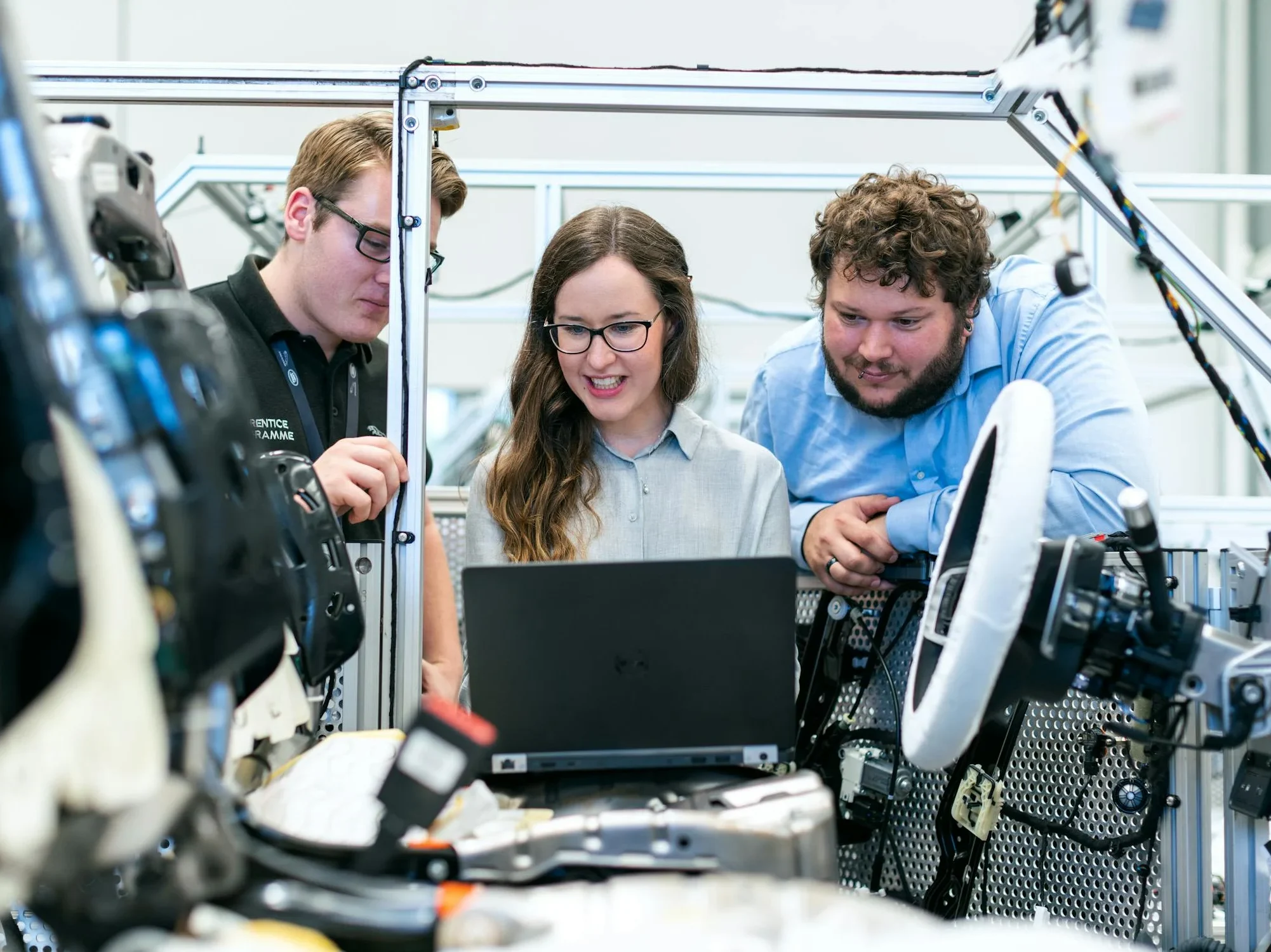Abstract
Engineers are tasked with improving everyday life with our technologies. This is a tremendous responsibility. Our work touches the lives of almost all individuals. To fulfill this responsibility, we must imbue certain virtues into our character to ensure our creations are virtuous. Thus, to be a virtuous engineer one must possess the traits of patience, humility, and curiosity.
Introduction
The field of engineering demands asking a great deal of questions. “How should this hinge be designed?” “What modes of failure must be considered to build this bridge?” While questions of this nature are important, the ethical realm of questioning cannot be forgotten. With the rapid growth of artificial intelligence and overall advancement of technology, engineers are obligated to understand the consequences of their creations. Accessibility has skyrocketed, providing people with a better quality of life. However, this power also carries immense responsibility. It is imperative that individuals who employ technology respect it, and that its inventors understand its potential misuse. A code of ethics is necessary to ensure this.
Engineer Jon A. Schmidt posits that virtues are the most effective framework in assisting moral dilemmas because they imbue virtuous character. Schmidt’s view is that “virtue ethics shifts the focus from individual actions to patterns of behavior … It is thus concerned primarily with someone’s long-term attitude towards risk, especially with respect to the potential impacts on the well-being of others” [1].
Defining an Ethical Engineer
Schmidt recognizes that under most ethical frameworks there is a sound set of ethical rules to abide by, but they do not place enough emphasis on intent. One’s focus should remain on being good rather than doing good. This distinction between the action and the intention is critical because even machines can perform actions. Intention is intrinsic to a person. Its significance lies in the morality of the individual and is more structurally sound. Character bleeds through in the work engineers do, so virtues act as a natural ethical framework to follow. An action is temporary whereas the intent behind it reflects the larger, and far more resilient, mindset of the engineer.
Viterbi recognizes the need for virtuous engineers. Its faculty and students know that engineering encompasses more than just scientific fluency; it is a multidisciplinary field that demands a careful consideration of the humanities. Therefore, Viterbi promotes the cultivation of patience, humility, and curiosity among its students – virtues fundamental to every engineer’s character. Patience provides the discipline needed to withstand the rigors of a project and the empathy required when working on a team. Humility is indispensable; there is always more to learn from oneself and others. Curiosity fuels the quest for answers, propelling engineers to explore and innovate, advancing scientific frontiers.
Patience
Patience is the first trait that comes to mind when considering what virtues apply to engineering. Aside from the arduous workflow that engineers encounter in their daily life, engineers have a responsibility to be patient towards people. Engineering depends on collaboration. Most companies that make significant impacts are facilitated by teams. To work together effectively, engineers must be patient with each other’s ideas and plans. In turn, patience is also required to cope when plans fail, a common occurrence in engineering.
This idea is exemplified by the multibillion-dollar company NVIDIA, renowned in Silicon Valley for its embracement of failure. In 2014, when a substantial team of engineers failed to penetrate the mobile-phone chip market, instead of dismissing them, company leadership redirected their focus towards a new market. This strategy proved successful, yielding around half a billion dollars in the automotive computing sector [2]. Failure drives engineering. Those with patience have the tenacity to push forward.
Nevertheless, patience is a rare virtue in modern society. Apps like Tik Tok have normalized quickly digestible content and have fostered a society that craves instant gratification. The current generation of individuals entering the workforce exists in a consumer culture that is addicted to positive stimuli. Everything from a five-second GIF to a like on one’s post is processed as a rush of dopamine. Thus, it has become increasingly difficult to forgo an immediate reward to pursue a goal that may be much further away. Patience, the discipline it takes to walk away from short-term rewards in order to achieve the greater good, is what separates great engineers from the rest. As such, it is one of the reasons why the CEOs of companies like Microsoft, Google, and Meta display such a trait. Engineers should have the patience to wait for success, to put in the long hours day after day until they finally reach their goal.
Humility
In concert with patience, humility is also incredibly influential. Humility can be everything from the willingness to ask for help to the maturity to admit when a project is no longer worth pursuing. This is one of the reasons engineers work in teams: to collect various ideas. Perspective is essential for engineering; it is crucial to keep an open mind. After all, what good is a product that is useful to no one? Engineers must understand what they themselves and other people value. To this end engineers must exhibit a sense of intellectual humility.
Carol Dweck, author of Mindset: The New Psychology of Success, famously differentiates the qualities of a fixed mindset from a growth mindset, and she argues that a key factor to success is to foster the latter through intellectual humility. She claims that “in a fixed mindset students believe their basic abilities, their intelligence, their talents, are just fixed traits … In a growth mindset students understand that their talents and abilities can be developed through effort, good teaching, and persistence” [3]. Good teaching includes the lessons learned from working with team members who aren’t engineers. Engineers should recognize the worth of disciplines beyond their own to broaden their own perspectives. The ability to leverage the skills of others to complement one’s own abilities is a skill in its own right. The truly astute engineer will recognize their own strengths and weaknesses to forge a team that appreciates each member’s expertise. Additionally, they will display intellectual humility to foster a growth mindset that allows them to be improved by the people and projects around them.
Curiosity
After mastering patience and humility, the final virtue an engineer needs to cultivate is curiosity. Those who possess enough curiosity to inquire more about the world are the ones who discover technological breakthroughs. It is incumbent upon engineers to challenge their surroundings and existing methods of practice as this is a driving force behind the advancement of technology. Engineers must exhibit a particular brand of curiosity, one that enables them to pose questions that venture into uncharted territory in order to propel the field forward.
Thus, curiosity insists that engineers should be open to exploring beyond their comfort zones, embracing new modes of thought and learning. In a paper elucidating their approach to a successful mission in space, engineers from Johns Hopkins University state that “conceptualizing and executing space missions calls for creative thinking coupled with careful and conservative implementation” [4]. The key words to note are “careful and conservative.” This perfectly encapsulates what it means to take an ethical risk.
Schmidt states that “risk taking is a good decision whenever it is based on defensible grounds, regardless of the actual results” [1]. This notion refutes an action’s consequence as the most significant aspect of risk taking; instead it relies on an individual’s character to ensure ethical practices. Defined by Professor of Ethics Nafsika Athanassoulis, character refers to an individual’s permanent dispositions on how to behave [1]. Hence, individuals who prioritize virtue as their goal tend to make careful and conservative decisions that follow their moral code. In doing so, they advance their field in an ethical way.
Conclusion
Schmidt claims that virtue ethics offer individuals a framework to become better people by focusing on their state of being rather than their actions. Individuals possessing patience, humility, and curiosity are uniquely equipped to make sound decisions and take appropriate actions in their fields. Patience and curiosity drive the determination to persist in the pursuit of answers, while humility ensures that this pursuit remains purposeful and grounded. Ethical questions may not seem as important to an engineer as a scientific question; however, ethical questions in the field are no less significant. Viterbi engineers need to be able to question the impact of their work, to perceive whether their work can be perverted to cause harm to others. We must ask if the work we produce has a net-positive outcome on society or if we are in some way contributing to its downfall. In doing so, we decide not only how we can build better technology, but how we can build a better world.
By Ayush Agarwal, Viterbi School of Engineering, University of Southern California
About the Author
At the time of writing this paper, Ayush was finishing his undergraduate degree in Mechanical Engineering and working on his Master’s in Applied Data. Post graduation, he hopes to work in the autonomous vehicle industry.
References
[1] J. A. Schmidt, “Risk and Virtue Ethics”. STRUCTURE Magazine, Jan. 2014.
[2] S. Boen, “Engineers Prove That Failing Fast Drives Discovery,” Engineering.Com. [Online]. Available: www.engineering.com/story/engineers-prove-that-failing-fast-drives-discovery.
[3] S. Phillips, “How ‘Intellectual Humility’ Can Make You a Better Engineer,” iConnectEngineers, Sept. 9, 2018. [Online]. Available: iconnectengineers.com/blog/intellectual-humility-can-make-better-engineer/.
[4] E. J. Hoffman and G. H. Fountain, “The System Approach to Successful Space Mission Development,” Johns Hopkins APL Technical Digest, vol. 20, no. 4, 1999. [Online]. Available: secwww.jhuapl.edu/techdigest/content/techdigest/pdf/V20-N04/20-04-Hoffman.pdf.

